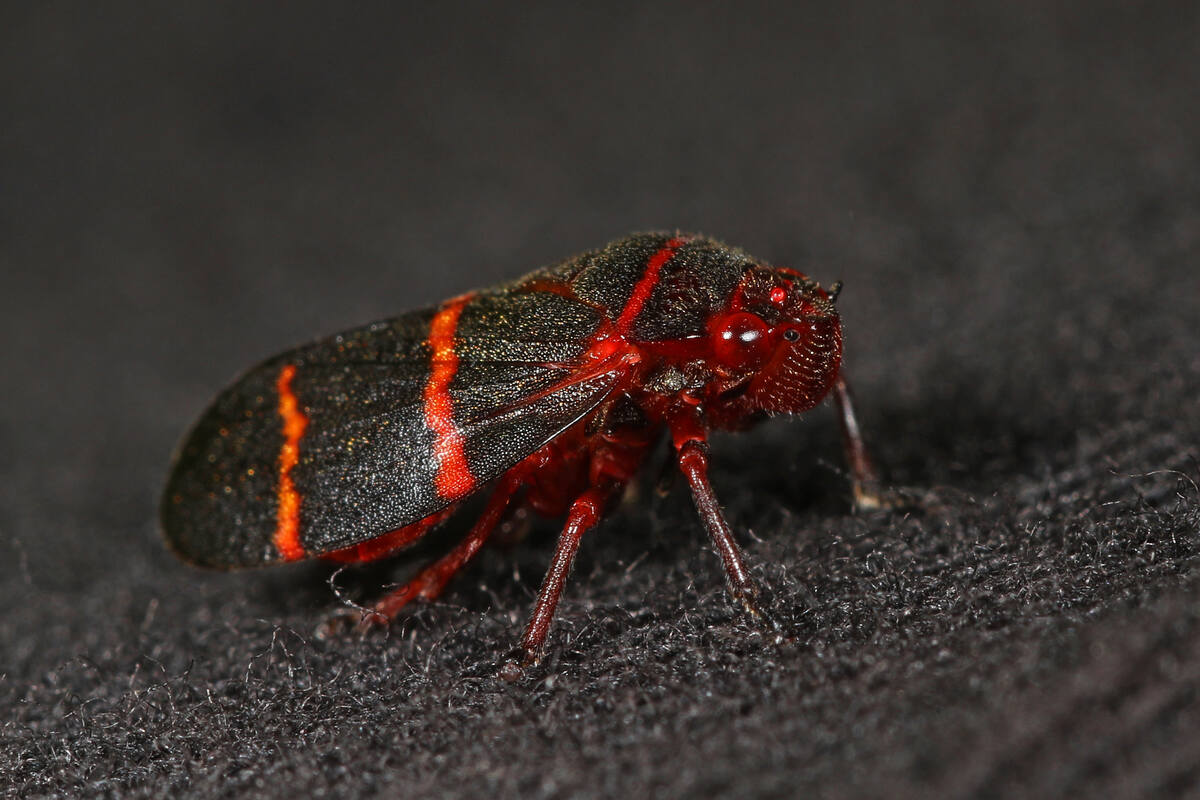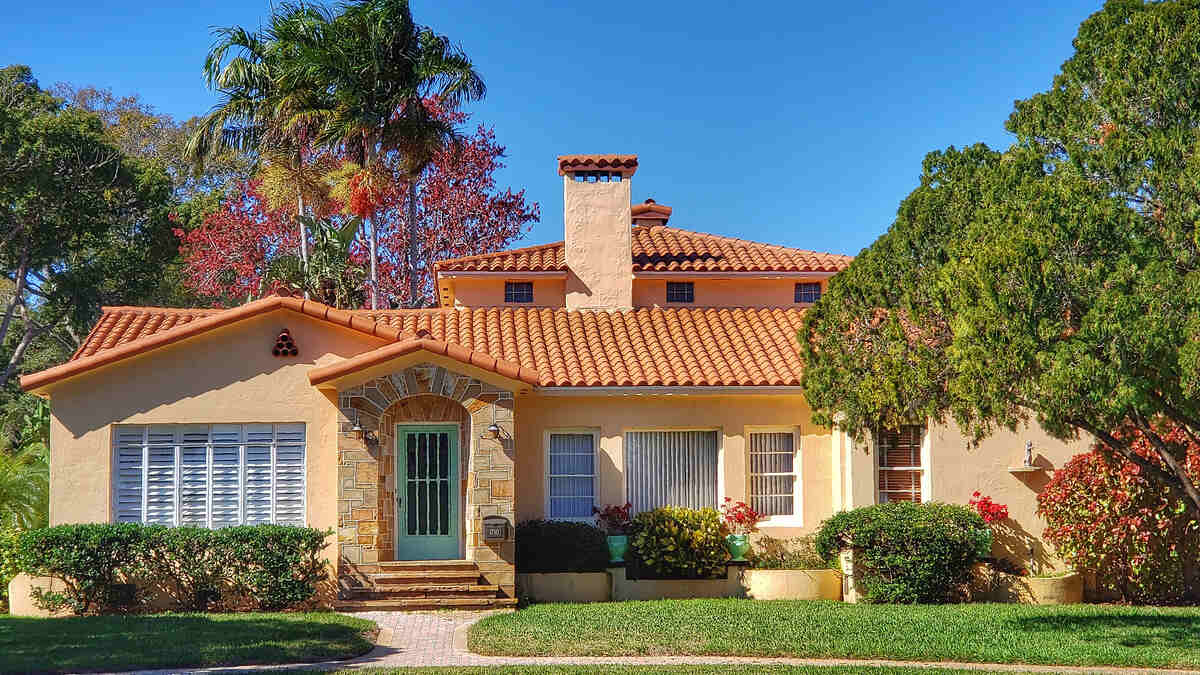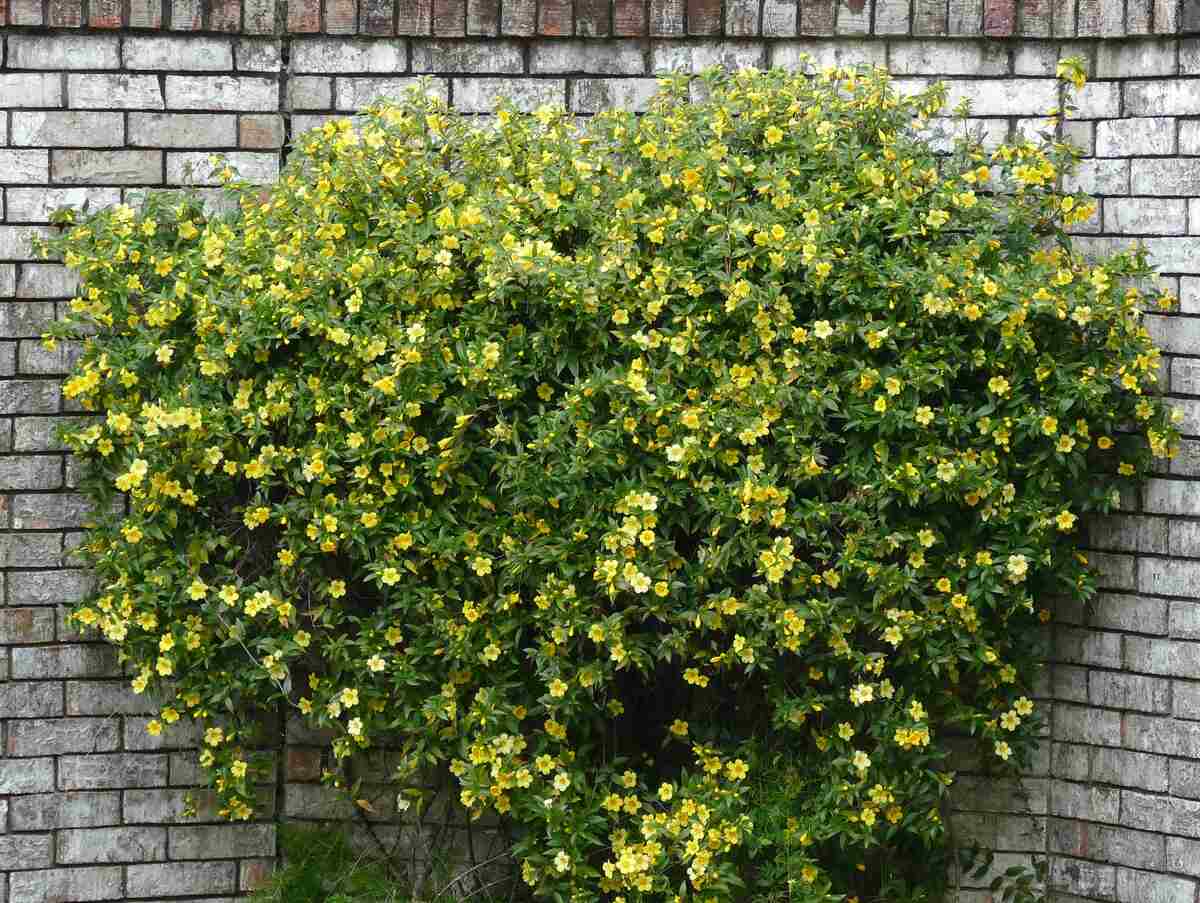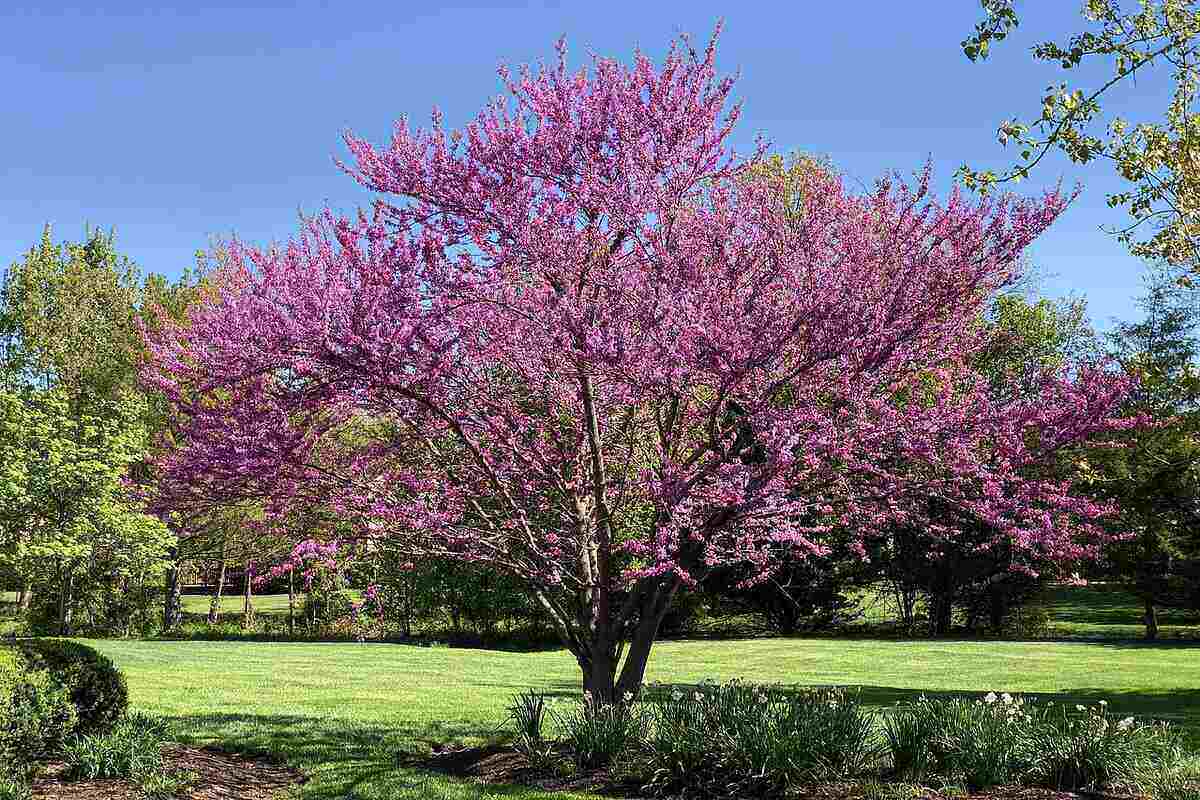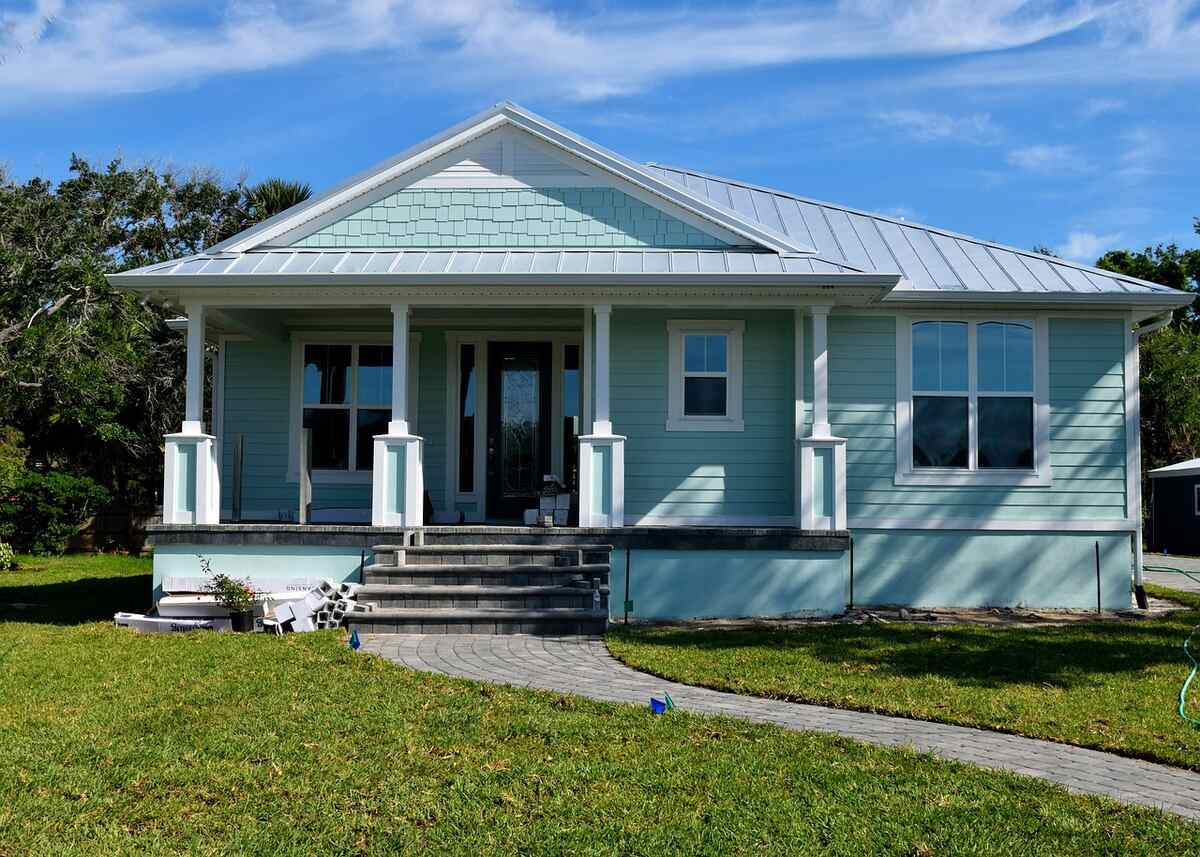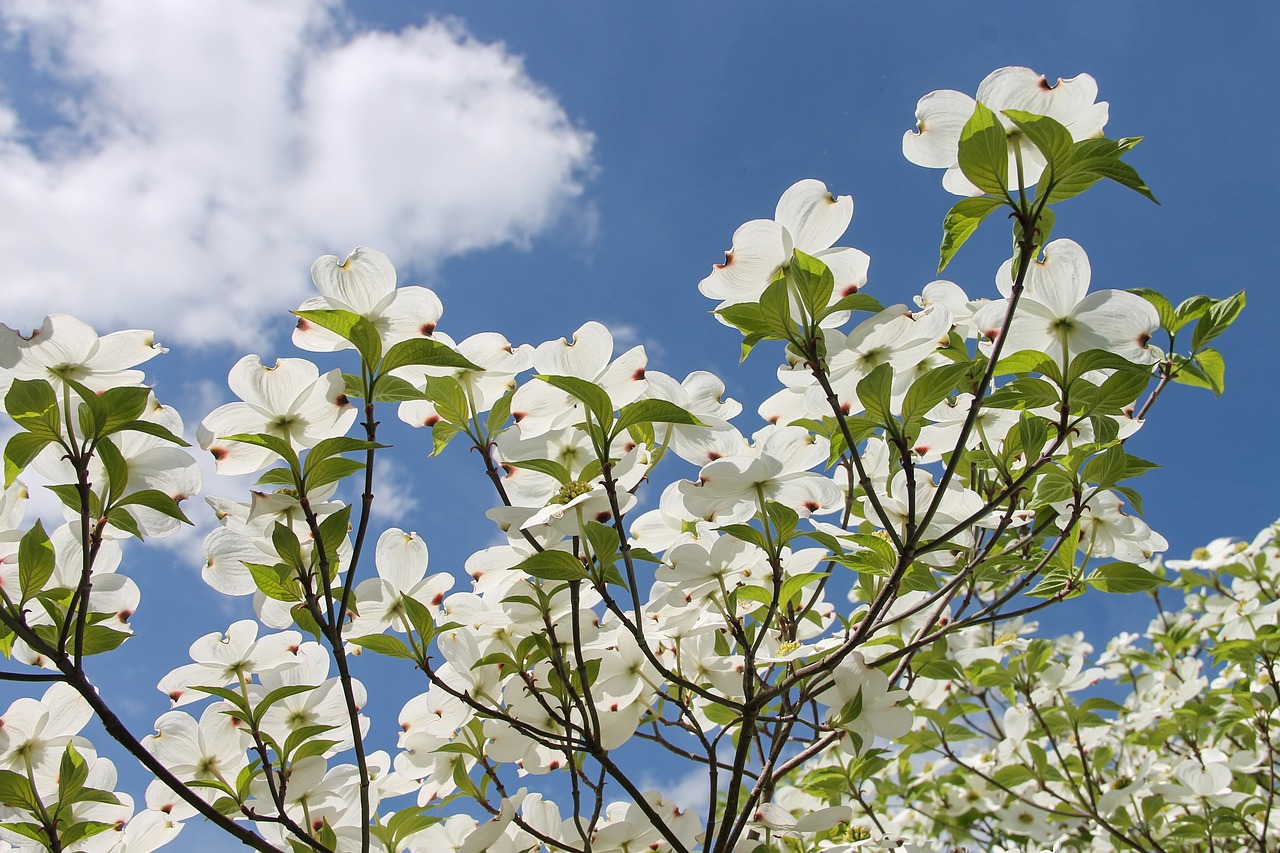
It’s no secret that Orlando has some of the most beautiful landscapes in the Sunshine State. With a diverse range of climates and conditions, there are plenty of fantastic native trees out there just waiting to be appreciated. But before you go out and pick up your next tree, here’s a helpful list of some of the best native trees for your Orlando landscape.
Whether you’re looking for a showstopper or something more practical, you’ll surely find a native Florida tree that can meet your needs.
- Why Choose Native Trees for Your Landscape?
- 10 Best Native Trees for Orlando That You’ll Love
- 1. Flowering Dogwood (Cornus Florida)
- 2. Fringe Tree (Chionanthus virginicus)
- 3. Carolina Buckthorn (Rhamnus caroliniana)
- 4. Southern Live Oak (Quercus virginiana)
- 5. Cabbage Palm (Sabal palmetto)
- 6. Yellow Trumpet Tree (Tabebuia umbellata)
- 7. Southern Magnolia (Magnolia grandiflora)
- 8. Florida Maple (Acer saccharum subsp. floridanum)
- 9. Eastern Redbud (Cercis canadensis)
- 10. Buttonwood (Conocarpus erectus)
- FAQ
Why Choose Native Trees for Your Landscape?
When sprucing up your landscape or adding a bit of privacy to your outdoor space, it’s tempting to look at imported or hybrid trees. But native Florida trees offer many more benefits than their non-native counterparts and can do a lot for the environment, too.
Native plants are adapted specifically to our local climate and environment, making them perfect for those times when the weather just won’t cooperate. They are the stars of Florida landscaping: low-maintenance, hardy, and resistant to local pests.
Plus, native flora provides natural habitats for the wildlife nearby — not only giving them ample food sources but allowing us humans to experience a slice of Mother Nature right in our own backyard.
10 Best Native Trees for Orlando That You’ll Love
Ready to dive into the wonderful world of Florida’s natives? Here are ten of the best native trees that look great in any Orlando landscape:
1. Flowering Dogwood (Cornus Florida)
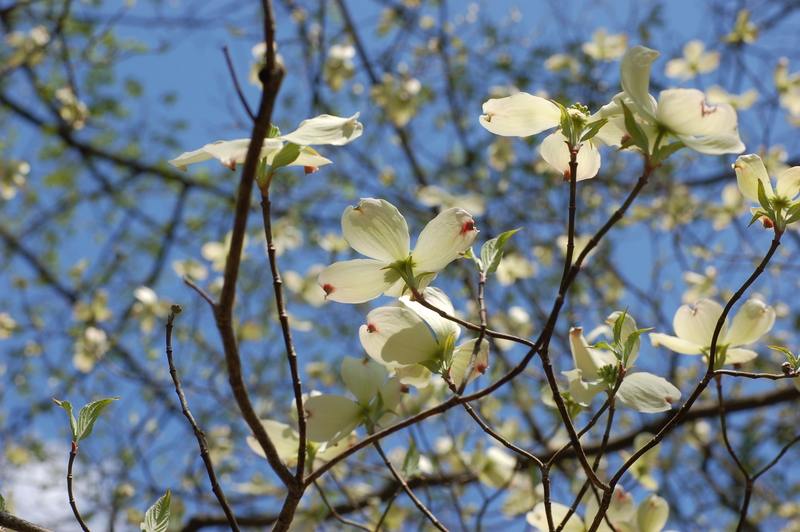
Photo Credit: Ram-Man / Wikimedia Commons / CC BY-SA 2.5
Few trees symbolize the beauty of springtime like the flowering dogwood. This moderate-sized tree has a unique shape and pretty pink or white blossoms that arrive mid-spring. In the fall, leaves turn a stunning scarlet red, adding another layer of seasonal beauty. Dogwoods are incredibly hardy and can thrive just about anywhere; they even do well in partial shade. This makes them an ideal choice for smaller yards or any outdoor space in need of a unique touch.
From its blooms to its changing foliage, the flowering dogwood offers a bit of natural beauty all year round. Simply put, it’s one of our favorite native trees for Orlando!
- Hardiness zones: 5A – 9A
- Sun: Full sun to partial shade
- Soil: Needs a well-drained site
- Duration: Deciduous tree with showy fall color
- Height: 20 to 30 ft
- Maintenance: Roots need to be kept cool with mulch in the summer
2. Fringe Tree (Chionanthus virginicus)
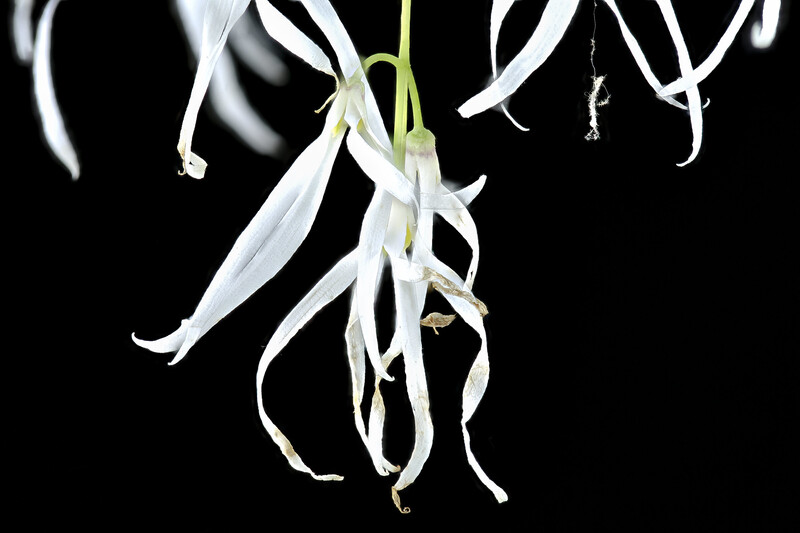
Photo Credit: USGS Bee Inventory and Monitoring Lab / Flickr / Public Domain
If you want to bring some beautiful color to your landscape, the fringe tree will likely be at the top of your list. This small-to-medium tree produces fragrant white flowers in the spring that look similar to those of a cherry tree.
Despite its size, the fringe tree makes quite an impression in any landscape thanks to its bright green glossy leaves, which are deciduous, meaning the tree is bare in winter.
Plant fringe trees as solitary specimens on the lawn or as part of a larger group to provide privacy and beauty. Just remember to water the roots regularly; this tree will require more moisture than other native varieties.
- Hardiness zones: 3A – 9B
- Sun: Full sun to partial shade
- Soil: Tolerates well-drained sites to occasionally wet sites
- Duration: Deciduous tree with no showy fall color
- Height: 12 to 20 ft
- Maintenance: Fertilize yearly for maximum growth
3. Carolina Buckthorn (Rhamnus caroliniana)
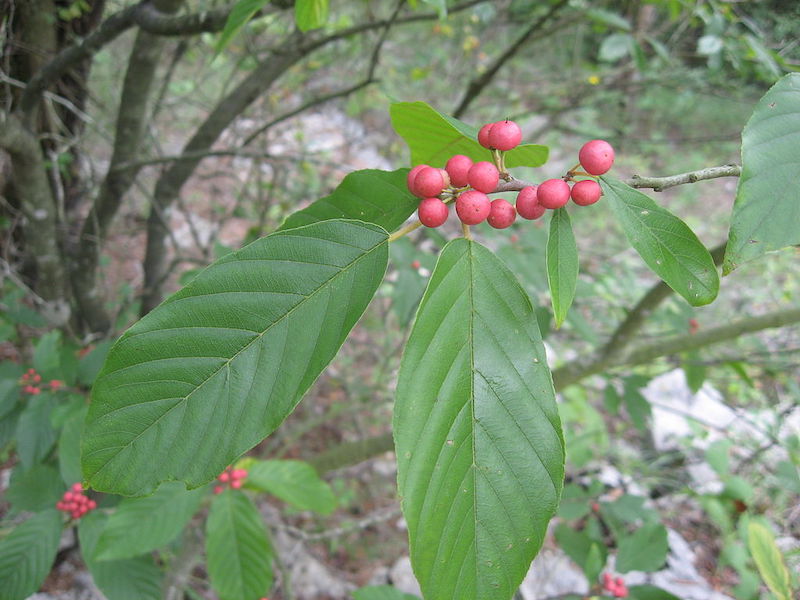
Photo Credit: Mason Brock / Wikimedia Commons / Public Domain
The Carolina buckthorn is a great small tree for any landscape. It grows to only 15 feet tall and has an open canopy filled with thin branches. Best of all, it produces edible black berries that are sweet and full of flavor.
With its deciduous nature, green leaves appear in the spring, then change to red and orange in the fall. You can grow Carolina buckthorn as a specimen plant or in a container for added interest to patio spaces. This adaptable tree can be grown in full sun or shade with soil that is well-drained or occasionally saturated.
Whether you choose to grow it for its color or for its delicious fruit, the Carolina buckthorn is sure to be a welcome addition to your Orlando yard.
- Hardiness zones: 5B – 9B
- Sun: Full sun to partial shade
- Soil: Needs a well-drained site
- Duration: Deciduous tree with showy fall color
- Height: 12 to 15 ft
- Maintenance: Little to no maintenance needed
4. Southern Live Oak (Quercus virginiana)
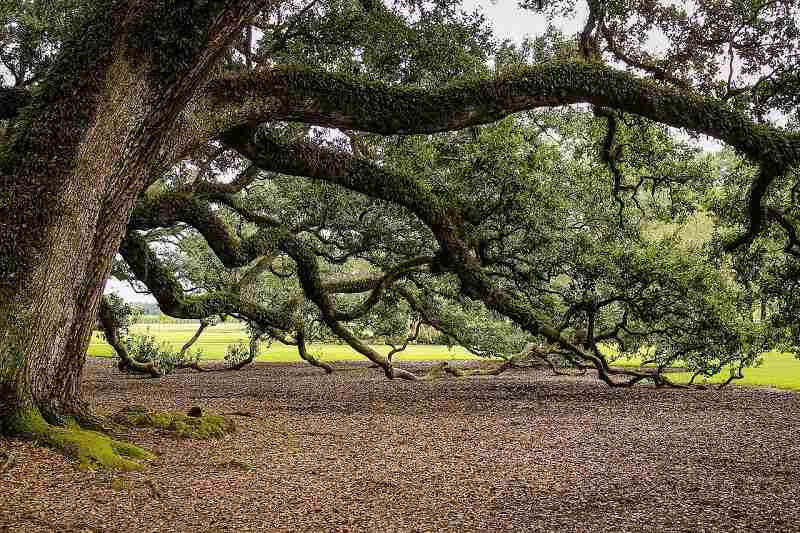
Photo Credit: Pixabay
Have you ever wanted to turn your outdoor space into a picturesque Southern garden? Then you must consider adding the Southern live oak. This beautiful tree has long dark-green leaves that are reminiscent of Spanish moss, creating a romantic and classic appearance.
Once established in the landscape, the Southern live oak requires little maintenance — a must-have for any busy homeowner. But be wary when planting this large evergreen tree near driveways or sidewalks, as its extensive root system can cause damage over time.
Southern live oaks are incredibly hardy, can grow up to 60 feet tall, and can withstand heavy winds or rain without issue. And as an added bonus, their acorns attract birds and other wildlife to your garden.
- Hardiness zones: 8A – 10B
- Sun: Full sun, partial shade
- Soil: Moist but well-draining soil
- Duration: Evergreen
- Height: Up to 60 feet
- Maintenance: Prune regularly while immature, clean up fruit and leaf litter
5. Cabbage Palm (Sabal palmetto)
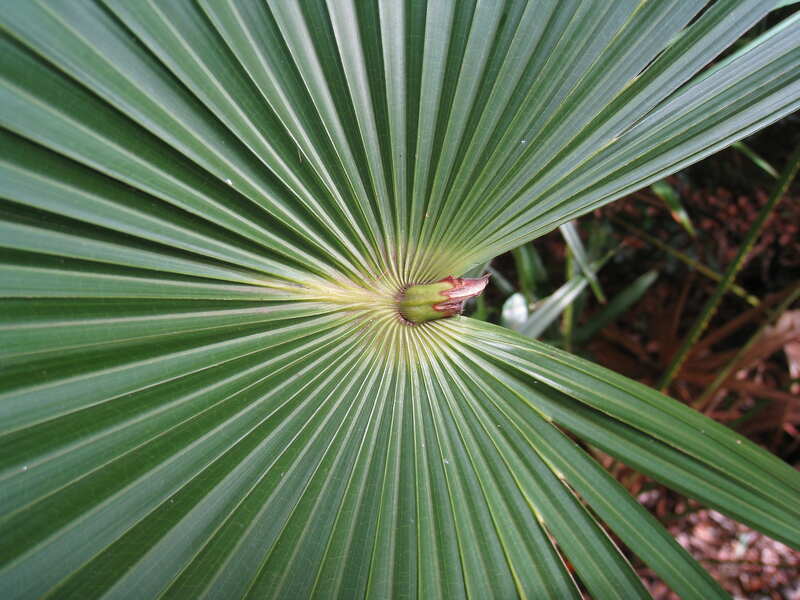
Photo Credit: John Tann / Flickr / CC BY 2.0.
We’re not sure there’s any greater symbol of Florida than the cabbage palm. The state tree, it’s also beloved for its hardiness in storms and is able to withstand Orlando’s hurricane-like conditions with no problem.
With its expansive canopy filled with green palmate fronds and long flower stalks, the cabbage palm offers a subtropical panache no other tree can provide. It thrives in locations from full sun to partial shade, grows up to 50 feet tall, and has a high drought tolerance.
Plus, its black fruits are a tasty snack for many animals, and your local birds certainly won’t mind the extra food! So if you want to add classic Florida charm, look no further than the cabbage palm.
- Hardiness zones: 8B through 11
- Sun: Full sun, partial shade
- Soil: Moist but well-draining soil
- Duration: Evergreen
- Height: 40 to 50 feet
- Maintenance: It requires routine watering only during drought or dry spells, but established palms can endure with just a deep soaking around the base of the tree every two weeks
6. Yellow Trumpet Tree (Tabebuia umbellata)
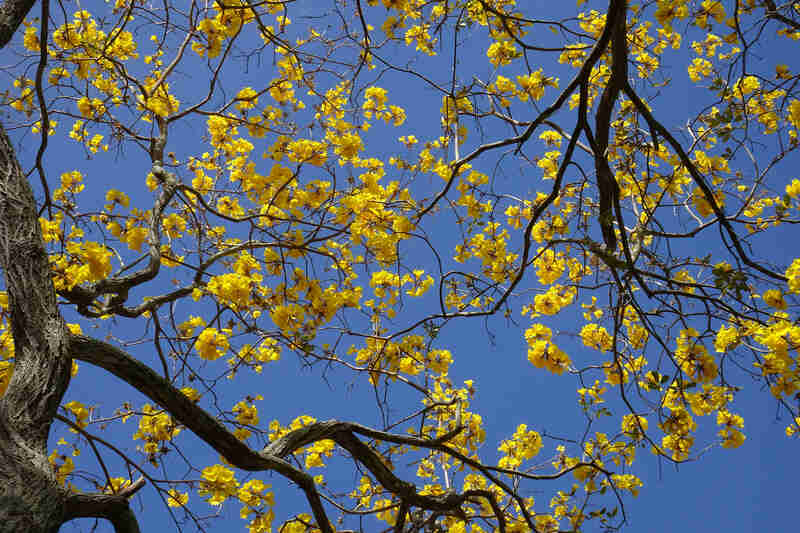
Photo Credit: Tatters ✾ / Flickr / CC BY-SA 2.0
We were tempted to call the yellow trumpet tree “the showstopper,” and we won’t even try to apologize for it. This gorgeous flowering tree is impossible not to get excited about — especially when you see it in full bloom. It produces a wild display of bright yellow trumpet-shaped flowers that hang from its branches in the late winter and early spring months — like sunshine come to life!
It’s also extremely hardy and able to withstand both high humidity and drought. Plant it as a specimen in your front or back yard, or use it to line streets for an unforgettable display of flora every year. As long as you give it plenty of direct sun and good soil, this tree can grow up to 40 feet tall and will reward you with an absolutely stunning show.
- Hardiness zones: 8B – 11
- Sun: Full sun for best flowering
- Soil: Needs a moist but well-drained site
- Duration: Evergreen
- Height: 25 to 35 ft
- Maintenance: It needs regular watering during the growing season.
7. Southern Magnolia (Magnolia grandiflora)
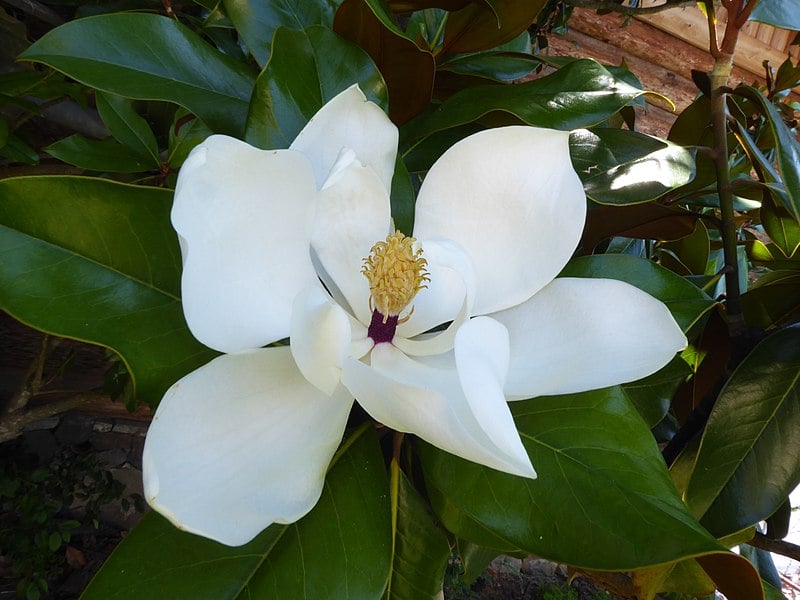
Photo Credit: Syrio / Wikimedia Commons / CC BY-SA 4.0
The southern magnolia may be no stranger to our Floridian landscapes, but that doesn’t mean it’s any less beautiful. This iconic tree produces large creamy-white blooms throughout the summer months, followed by dark green glossy leaves year-round.
Aside from its beautiful features, it’s also incredibly functional: magnolias’ dense canopies make them an ideal choice for privacy screens. Plant in rows to create a living wall where you need it most, or use them as borders along sidewalks or around your entryway.
Southern magnolias prefer moist and well-drained locations, in either sun or shade. As long as you don’t overwater the tree, it’s quite hardy and will reward you with stunning blooms come summertime.
- Hardiness zones: 6A – 10B
- Sun: Full sun, partial shade, full shade
- Soil: Moist but well-draining soils
- Duration: Evergreen
- Height: Up to 90 feet
- Maintenance: Fertilize during the first three growing seasons, clean up fallen leaves and seed pods
8. Florida Maple (Acer saccharum subsp. floridanum)
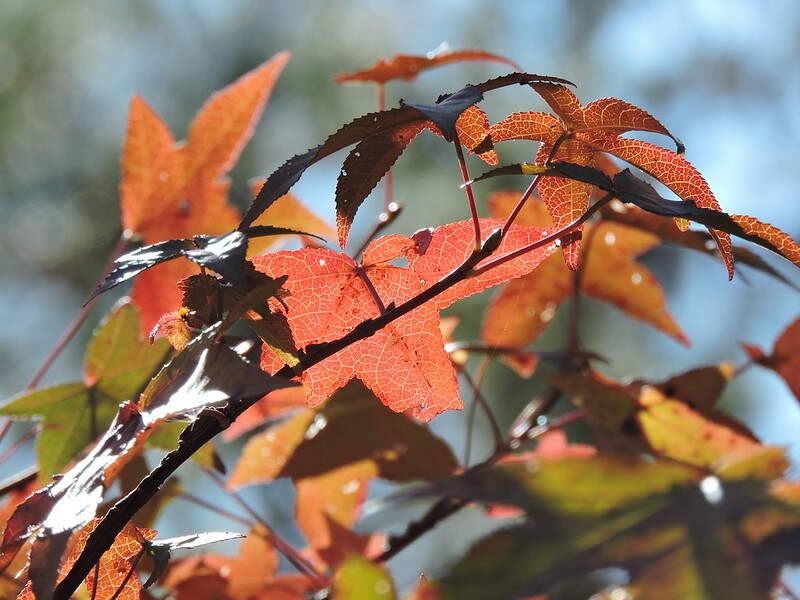
Photo Credit: Florida Fish and Wildlife / Flickr / CC BY-ND 2.0
Have you ever wanted to add some of that classic fall foliage to your landscape? The Florida maple will be the answer. With its attractive yellow or orange fall leaf color, this ornamental tree is ideal for any yard in need of a little autumnal cheer. While smaller than its northern cousin, this lesser-known maple is well-suited to the warmer climates of Florida.
This deciduous tree can grow up to 60 feet tall, but it’s more often seen reaching heights of 20 to 30 feet. As it matures, its attractive ribbed gray bark adds even more texture to its stunning foliage.
The Florida maple prefers full or part sun and can tolerate a variety of soils — plus a bit of drought here and there. And don’t forget: this tree has shallow roots, so it shouldn’t be planted where people or machines will run into them.
- Hardiness zones: 6B – 9A
- Sun: Full sun to partial shade
- Soil: Occasionally wet clay or sandy soils
- Duration: Deciduous
- Height: 20 to 30 feet
- Maintenance: Water regularly during long dry spells
9. Eastern Redbud (Cercis canadensis)
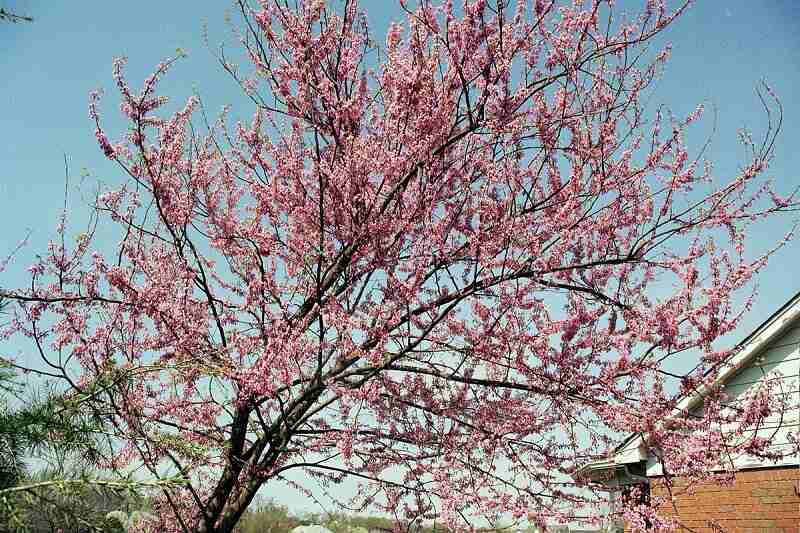
Photo Credit: BETTY / Wikimedia Commons / CC BY 2.0
Since we’re talking about Floridian trees, one of our absolute favorite natives is the Eastern redbud. Although it’s native from Canada to Mexico, it loves the central Florida sunlight and can stand up to the climate changes between seasons. This tree announces the coming of spring with its clusters of small pink or white flowers, as well as its heart-shaped leaves and color-changing foliage, which deepens to dark green by the end of summer.
It can reach up to a whopping 20 to 30 feet with a 25-foot spread and is incredibly versatile, so whether you need to fill an empty space or add more color, the redbud will be your friend. Bonus: it’s also pest and disease resistant!
Grow it as a solitary specimen or as part of a larger mixed planting, and you’ll be rewarded with floral treats that attract bees, butterflies, and birds. Ah, nature!
- Hardiness zones: 4B – 9A
- Sun: Full sun to partial shade
- Soil: Moist Tolerates well-drained sites to occasionally wet sites
- Duration: Evergreen
- Height: 20 to 35 ft
- Maintenance: Requires little to no maintenance once established
10. Buttonwood (Conocarpus erectus)
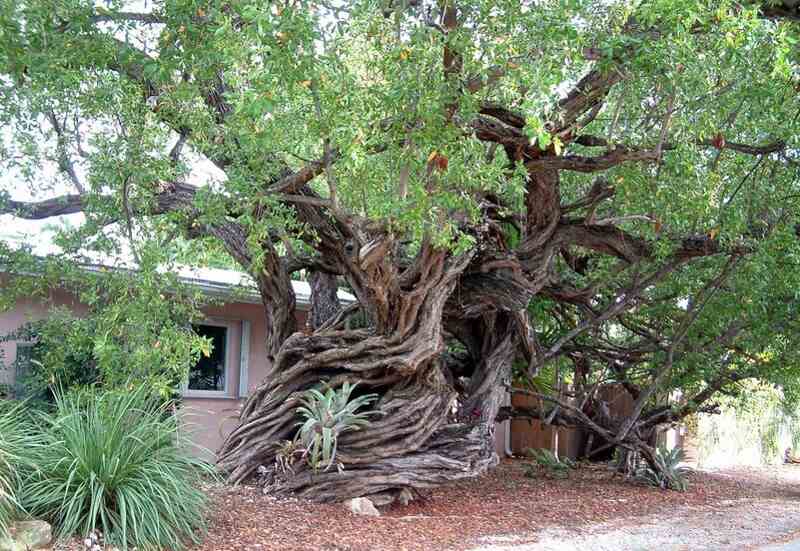
Photo Credit: Cayobo / Flickr / CC BY-SA 2.0
What’s so special about this multi-trunked evergreen? Many, many things! It’s incredibly hardy and is native to Florida’s coastal regions, making it a perfect pick for homeowners in need of a low-maintenance tree with a bit of unique flair.
Plus, buttonwoods create an eye-catching contrast in the landscape with their vivid green foliage and intricate bark pattern. And if that’s not enough, they also produce small yellow flowers in late spring — talk about a winning combination! Plant buttonwoods in full sun or part shade and enjoy their many benefits.
- Hardiness zones: 10B – 11B
- Sun: Full sun
- Soil: Mostly wet to well-draining soils
- Duration: Evergreen
- Height: 30 to 45 feet
- Maintenance: Requires little to no maintenance once established
FAQ About Native Trees for Orlando
Yes! Native plants and trees are already adapted to the climate, which means they require less water and fertilizer than non-native species. Plus, they provide food and shelter for local wildlife like birds and butterflies, something that can’t be said for hybrid or imported trees.
Absolutely! Both native and non-native trees in the Orlando area can experience changing leaves or blossoms throughout the year. In fact, some of our featured trees, like dogwoods, yellow trumpet trees, redbuds, and magnolias, all put on quite a colorful show that will be worth the wait.
The Sunshine State’s trees may not experience the same degree of leaf changing that many Northern states have, but there are still plenty of specimens in Orlando with fall foliage. The Southern live oak and the Florida maple both turn gorgeous shades of yellow and orange in fall. So, you can always enjoy some seasonal color in your landscape with the right tree.
Yes, there are two species of maples with proven success in the Sunshine State: red maple and Florida maple. These native tree varieties have even been dubbed “Florida hardy” and can easily withstand the humidity and high temperatures that Floridians know all too well.
How Native Trees Make Your Orlando Landscape Stand Out
Finding the perfect native tree for your Orlando home goes a long way toward creating an unforgettable landscape. Whether you’re looking for color all season long or sweet-tasting fruits and nuts, there’s a Florida native tree for you – not to mention the birds, bees, and butterflies who will find your garden irresistible.
When it comes time to give your outdoor area the upgrade it needs, Orlando landscapers can easily take care of the hard work. You’ll be showing off your beautiful native trees to guests and neighbors in no time!
Main Image Credit: Virginia State Parks / Flickr / CC BY 2.0
